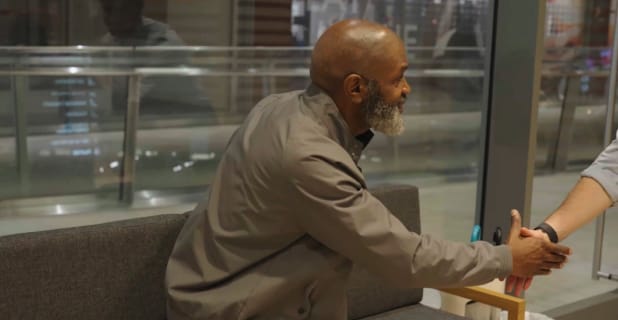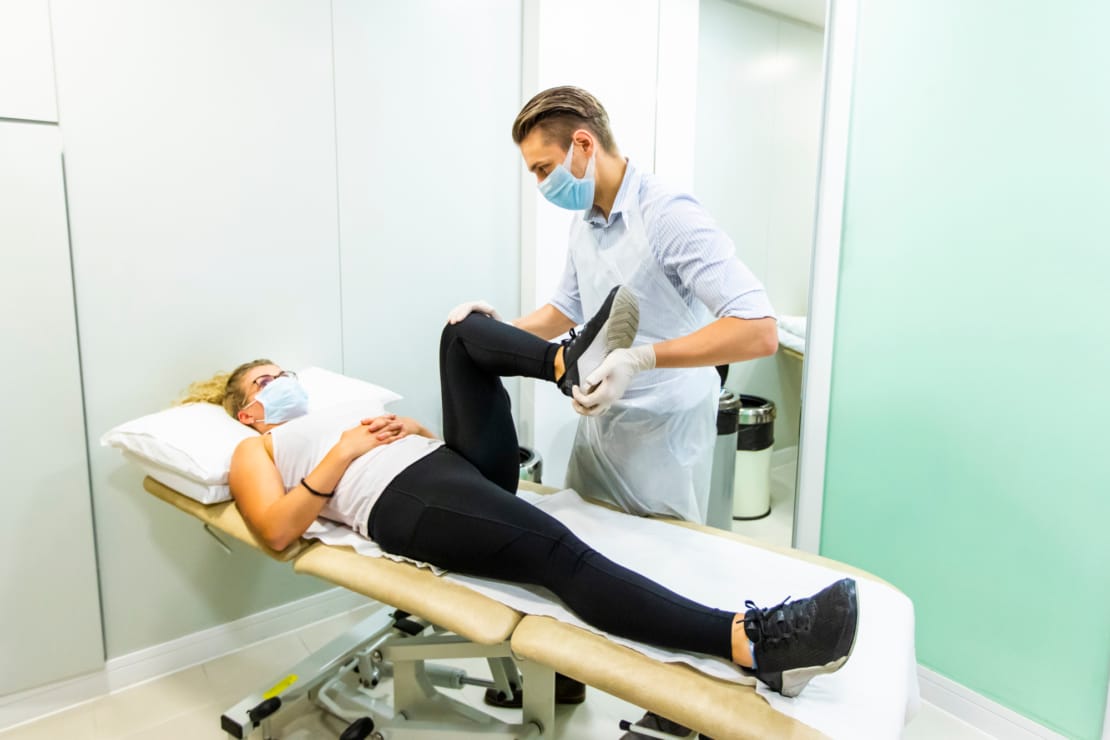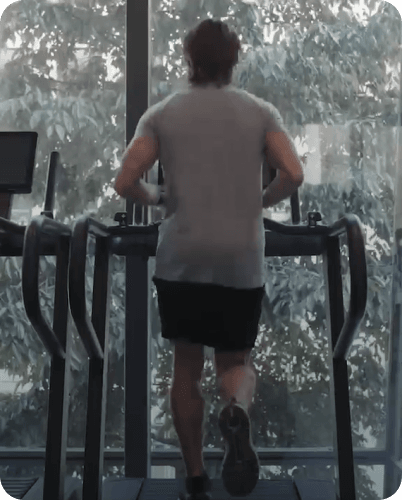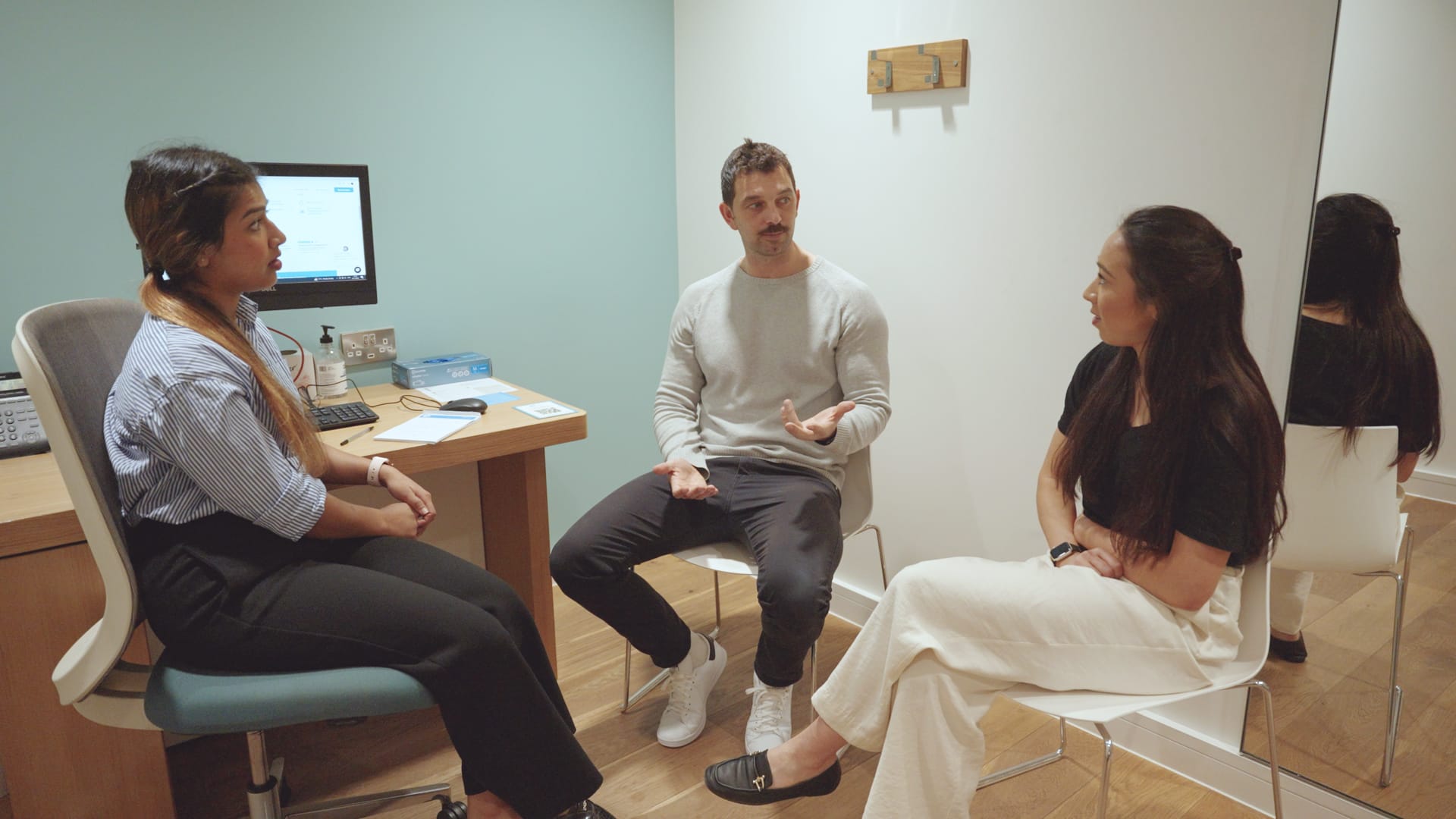PSM Interviews: Håkan Alfredson

Pure Sports Medicine
- 21 September, 2018
- Physiotherapy
- Rehabilitation
- 9 min read
If you want to book an appointment with Professor Håkan Alfredson please call the Chancery Lane clinic.

Interview held by Paul Welford, Physiotherapist
Professor Håkan Alfredson and Dr Lorenzo Masci’s tendon clinic was one of the reasons that I wanted to work at Pure Sports Medicine. During my early years as a physio, I was frustrated by the guru-led, pseudoscientific approach that I felt dominated the profession.
The academic integrity of Håkan’s publications on eccentric loading came as a breath of fresh air. For me, Håkan’s work transformed the Achilles tendon from an inert, fibrous cord into a sensitive biological tissue with unknown potential for adaptation and structural remodelling. We, as physiotherapists, suddenly held the key to one of the most effective treatments in sports medicine.
Tendon loading principles have developed since those early years. It was Professor Jill Cook in Melbourne who alerted me to another landmark in Prof. Alfredson’s research career – the elusive plantaris. By this point, I had become convinced that some tendinopathy patients do not recover through rehabilitation alone. Insertional tendinopathies remain our Achilles’ heel, but I also saw patients whose midportion pathology defied our best rehab efforts. Did Håkan’s anatomically respectful, mini surgical techniques hold the answer? So it was that I visited Umeå for my medical elective and sat down to talk tendons with Professor Alfredson.
Håkan, I know you have had some personal experience with Achilles tendinopathy. How has this helped you to treat patients and develop new treatments?
Yes, that actually started all of our research around the Achilles. When I moved up to Umeå in 1993, I was running a lot and started to get midportion Achilles tendinopathy. At that time, we treated this condition with rest and NSAIDs. If it persisted, we operated, cutting out the thickened part of the tendon and confining the patient to a cast. It was around 4-6 months before patients returned to running… and the results were not always good.
Anyway, I spoke to my boss about my painful Achilles’ tendon. He refused to operate on me, saying that he could not afford to have me on sick leave. So I visited the physios, and we started to discuss eccentric training. This was a new concept; theories existed, but there had been no research involving patients. I tried eccentric training, but my condition actually became worse! When I limped back to my boss, he said, “If it’s about an Achilles operation, you can leave the room immediately.” Then I was angry… I went back to my physio friends and said, “OK, now I’m going to load my Achilles with heavy eccentrics and rupture my tendon – then my boss will have to operate on me!” I loaded up with heavy weights, but something unexpected happened. I found that the more I loaded, the better my tendon became. So after about three weeks, I was completely pain free and could return to running.
We thought that this must be a coincidence, but it was interesting enough to plan some research. So we decided to try heavy eccentrics with patients on my waiting list. There were around 20 patients, all with midportion tendinopathy – I was going to operate on them. Fifteen of these patients decided to try heavy eccentrics first. All of them became pain free. One of the patients came back and needed to be operated, a year later, but the rest of them were cured. This led to new thinking around tendinopathy and whether exercises should be painful.
It seems that this really directed your career from that point onwards
It did. It all started by coincidence – I think that a lot of research starts in this way. Since then, we have used heavy eccentric training programmes to treat a lot of chronic, painful tendons. You don’t cure all tendons with eccentric training, but quite a large proportion will respond – especially recreational athletes. High-level athletes often need more (treatment), but I think that trying eccentric training at an early stage in the condition improves the chances of becoming pain free.
So if, in 1993, you had known what you know now, would you have thought differently about having surgery?
We did far too much surgery back in the time before we knew the benefits of eccentric training. At that time, we had no science to support our decisions. We thought that the thickened tendon was filled with nerves. We went on to look at biopsies from around 200 operated tendons and found that there are actually very few nerves inside the tendon. The majority of nerves are located outside. This showed that it is very rarely necessary to operate inside the Achilles tendon.
And led to some later developments in your surgical practice?
Yes, we realised that these nerve-rich areas outside of the tendon were related to regions of high blood flow. These regions can be localised using Doppler ultrasound and used to help guide treatment, whether it is by injection or surgery. You aim for the blood vessels to target the nerves. The results of these techniques are quite good, and the rehab times are shorter. As you have not interfered with the tendon, it is similarly strong and can therefore be loaded earlier. All of this is based on the results from eccentric training.
I’ve seen you give a few sclerosing (polidocanol) injections. What are the indications for these injections, in your view?
We rarely use them on the Achilles midportion now. This is because patients often require 2-3 injections, with around 6-8 weeks between each injection. Many patients with midportion tendinopathy also have plantaris involvement. We now treat these patients with an ultrasound-guided scraping procedure and, if appropriate, removal of the plantaris. But we do use sclerosing injections for patients with insertional problems. The injection also has a diagnostic role because of its local anaesthetic effect. The response varies from one individual to another, but overall, about 50% of patients respond. If someone does, we might give 2-3 injections to try and cure their condition. It’s worth trying, because surgery in this area can be quite major, requiring 3-4 months out from sport postoperatively.
It seems that your methods have become less invasive and more targeted as you have learned more about the tissues that you operate on, for example in tendinopathy with plantaris involvement?
Yes, we treated a huge number of Achilles patients with scraping procedures, but not all of them had a good result. Around 10-15% of patients returned with pain in the mid portion, often on the medial side. At that time, we operated on the Achilles tendon from the lateral side. When we re-operated on these patients using an incision on the medial side, we found plantaris tendons located close to, and sometimes even inside, the medial Achilles. We found that removing around 5-6cm of the plantaris cured the pain in these patients. This was how we realised that plantaris involvement was a factor in subgroups of patients with midportion tendinopathy. My research student Christoph Spang showed that, in contrast to the Achilles, sensory nerves are located inside 2/3 of tendinopathic plantaris tendons. The most nerve-rich tissue in these cases was fatty tissue located between the plantaris and the Achilles tendons. It’s always good to follow up cases in which the patient had a poor outcome – those are the ones that you learn from.
The other recent development that I have seen from your work is the subcutaneous bursa, and its role in insertional tendinopathy. Can you tell us more about that?
Again, it was a coincidence that led to us discovering the importance of the subcutaneous bursa. When you operate on the Achilles insertion, you find pathology in three different tissues: the subcutaneous and retrocalcaneal bursae, the tendon, and lastly, bone pathology, whether it’s a Haglund deformity or a bone spur. It is very difficult to know where the pain is coming from. Well, we had a patient who couldn’t be away from exercise for long periods – she needed to exercise regularly because she had a severe lung disease. So even though she had severe pathology at the Achilles insertion – with bone bridge formation – we only removed the subcutaneous bursa so she could load immediately afterwards. She was cured by this procedure.
The subcutaneous bursa is the most nerve-rich tissue in the area, so it is probably worth trying to remove this initially. There is no need for any intra-tendinous procedure, which, if it involves detaching the tendon, can delay rehab and is quite risky. So, because of this one patient, we learned about the subcutaneous bursa. Now, when I see these patients with combined insertional pathology, I test them by injecting local anaesthetic into the subcutaneous bursa. If they can then run without pain, then I only remove the subcutaneous bursa. If the pain remains, then you need to think about the other structures. Now we need to do some clinical studies in this area.
During my time here we have seen several patients that previously had corticosteroid injections around the Achilles. At operation, the cortisone appeared not to have been metabolised – I have seen partial ruptures and holes in tendons, associated with injection sites. Do you think there is ever a role for injecting cortisone around the Achilles tendon?
No, I have a very strong feeling about the negative side effects of cortisone. I can understand why it has been used because it has an immediate pain-killing effect. But the pain often returns after 3-4 weeks. It also causes necrosis. This is certainly the case if you inject it inside the Achilles, but even if you inject it outside the tendon, parts of the steroid can be transported inside and cause necrosis. It can also cause necrosis in the fatty tissue around the tendon. I actually used to use it myself, for ultrasound-guided injections into the retrocalcaneal bursa. Then I had two cases where the Achilles ruptured on the deep side, associated with the injection site. Most likely, the cortisone had gone through the bursa into the Achilles. So in my opinion, there is no indication for the use of corticosteroid injections in Achilles tendon disorders.
What about the use of platelet-rich plasma (PRP) injections as a treatment for tendinopathy?
I am a bit frustrated by the use of platelet-rich plasma. Injecting PRP is not based on any science. There is no study in the world that has shown a need to inject anything into these tendons. For many years, there has been a misunderstanding that there is a partial rupture in the tendon – a hole that needs to be filled out by something, but it’s actually extremely rare to have a partial rupture in tendinopathy. It’s never indicated to inject PRP into these tendons because there is no hole to fill out; nothing to ‘heal’. The same goes for stem cells. Why should we inject stem cells? Biopsies have shown that there are already multiple stem cells in tendinopathy tendons, so why should you inject more? Cells in tendinopathy also become pain producers – they produce substances that cause pain – so injecting stem cells or PRP may even induce them to cause more pain. Injecting into a tendon can also injure the tissue; by causing a region of increased pressure, you can actually trigger a partial rupture. So overall, there is never an indication to inject anything into a tendon.
So how do you think we should be managing these patients? Is there is a specific pathway that you recommend clinicians to follow?
Yes, I think so. The first step is to establish a proper diagnosis. Many people say that you can do that clinically, but this is difficult in some patients. In the older population, for example, it is very difficult to exclude a partial rupture. So you need an ultrasound to reach a proper diagnosis. If there is only tendinopathy present, then the next step is to subject the patient to a loading regimen. This can include heavy, slow resistance and isometrics, but most science is around eccentric loading. Patients should continue for 3 months and possibly longer in the case of insertional tendinopathy. If there is a poor result at this point, then I think the next step is to discuss surgery. For insertional tendinopathy, you can maybe try a diagnostic injection of the superficial bursa and one sclerosing injection before surgery. For mid-portion tendinopathy, the treatment is ultrasound-guided mini surgery.
Having spent a month here, I have seen how minimally-invasive these procedures are. What would you say to my rehab colleagues who are naturally inclined to prefer conservative treatment?
I would say that it is important to remember that this surgery is performed outside of the Achilles tendon. There is no interference with the internal structure of the tendon, so it is similarly strong pre and postoperatively. In fact, we have seen that if you operate in the right spot, outside the tendon, then over time, the inside of the tendon can start to remodel. The other thing I would say is to avoid using too much shockwave or laser treatment. Pathology in the Achilles midportion is located on the deep side of the tendon, so administering shockwave from the superficial aspect could injure the only part of the tendon that is normal. At the insertio,n it could be used for the superficial bursa, but in my mind, it is never indicated for midportion Achilles tendinopathy.
You were involved with the development of a new surgical treatment for patellar tendinopathy – the ultrasound-guided arthroscopic shaving procedure. How did that come about?
That started after the Achilles scraping procedure. We had done similar histological examinations of the proximal patellar tendon and found that the nerve supply was exactly the same: lots of nerves outside the deep surface of the tendon, related to regions of high blood flow, but very few nerves inside the tendon. The traditional surgery for jumper’s knee was tenotomy and excision of the abnormal tissue. This was similar to the procedure that I used to do myself for the Achilles midportion but again, the results were quite poor. A randomised study in Norway showed good results in about 50% of cases – similar to the success rate with eccentric loading. So we decided to try a technique that was similar to the Achilles scraping procedure. My research student, Lotta Willberg, did this in a research project down in Stockholm. It was a really good scientific study. I didn’t see the patients in that study. She operated; I only acted as her research tutor. She has followed the patients over time, with excellent results.
And finally… How is your Achilles tendon now?!
Perfect! I have not have any surgery, just loading. The thickness of my tendons has reduced and I continue to run – pain free!
Thank you very much for talking to us Håkan, and thanks again for having me in Umeå.
To hear Håkan’s thoughts on high-volume injections, tune in at 28mins 30sec.
Refer patients to Alfredson’s Tendon Clinic at Pure Sports Medicine by calling: 0203 595 1234 or emailing [email protected]

Advice
Over the last 20+ years our experts have helped more than 100,000 patients, but we don’t stop there. We also like to share our knowledge and insight to help people lead healthier lives, and here you will find our extensive library of advice on a variety of topics to help you do the same.
OUR ADVICE HUBS See all Advice Hubs

